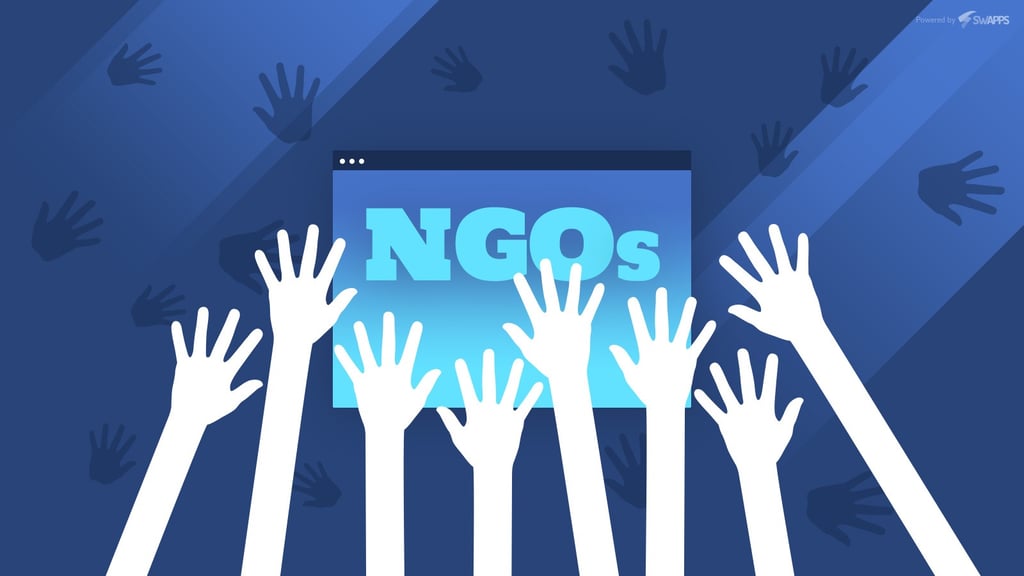Best practices for NGO websites

Let’s face it. Websites have become the front desk of companies worldwide, even more, when you are an NGO that wants to share the world your story: what are you doing and, more important, why it is worth investing in you. It is not difficult to know what would happen with a potential donor or a beneficiary if it reaches a messy or visually obscure page, right? Most likely, that person will get a bad first impression and the project will miss, perhaps forever, a great opportunity.
Thanks to the knowledge of previous work with several NGO’s, we will share some of the best practices when assembling, designing and planning a website for an NGO.
Golden rule: know your audience
This not only applies to NGO websites, it applies to any project or business and, although it is basic, many make the great mistake of disregarding it.
Have you taken the time to answer the following questions? If you have already done so, congratulations, you have the main tool, otherwise, it is advisable to make time.
- Who are my beneficiaries?
- What characteristics do they have?
- University students, professionals, parents or mothers, company directors?
- Men or women?
- Will they visit me from a mobile or a desktop?
- What will they be interested in knowing?
- What do they like?
- Any dislikes?
With so much information and an abundance of options, people look for projects that speak directly to them. This is why, first of all, you should think about the target audience of the website and the project. This can be as simple as asking simple questions that identify the “ideal client” to build what NGO marketing and regular marketing have referred to as “Digital Persona”, this allows structuring the messages, content, and actions of the website.
Share the impact: tell the stories
Your NGO raises money, not because of your product or thanks to the supplies you deliver. You raise money thanks to the lives that you touch, and improve. Chances are that your project already has some impact then you must tell everyone!
Collect a testimony, record a video, take pictures.
It all sums up!
The website is the perfect platform to share the achievements of your NGO and you must plan accordingly. Thinking about whether the site will work around photos, or will have a lot of text allows you to discover what structure to follow. In Swapps we have had NGO websites that focus on justice, climate change, nuclear risk, civil rights between others. Knowing in advance, what can you share, makes you much more effective in spreading the message.
Emails are worth gold
Not a “like”, it is not a tweet, it is not a view or a follower. Now, more than ever, the most valuable input that can and should be stored in your database is an email.
Just pause for a moment. How long have you been using your current email address?
If you are like most people in the world, your email is already several years old and you do not plan to change it in the short term. Besides … a newsletter email list it’s the only thing you, the NGO, can really control. Even more when large social platforms are constantly changing their algorithms to squeeze out profits.
Your NGO website should have a way to collect emails and not only that, it should be structured to promote this. Think about how to invite your readers to keep in touch and tell you why they should do so.
The Website
You need to create a website that your users love, so It should have great content but It also needs to be easy to use. For doing that, you need to identify your audience and create something that they can understand and like. Besides that, the website is the perfect place to publish your updates, you can include forms to join to the newsletter, contact you, include forms for donation or you can even include an e-commerce solution to sell events or products that help to your cause.
You could be interested to read: Why many websites are simply not intuitive or usable
Social Media, SEO & Marketing
These disciplines are not exclusive for business, NGOs require social media to share with the world what you do, and It’s very important to establish a channel with people willing to help or even donate to your organization. To take the maximum advantage of your website, you need to create content and share it on social networks, encourage your followers to share your content.
SEO is not an exception. You want visitors to your website, and search engines are the channels to get visitors interested in your content. For doing that, you need a website that follows SEO good practices and you frequently write content for your target. For more information read Search engine optimization (SEO) is like planting a mango tree


